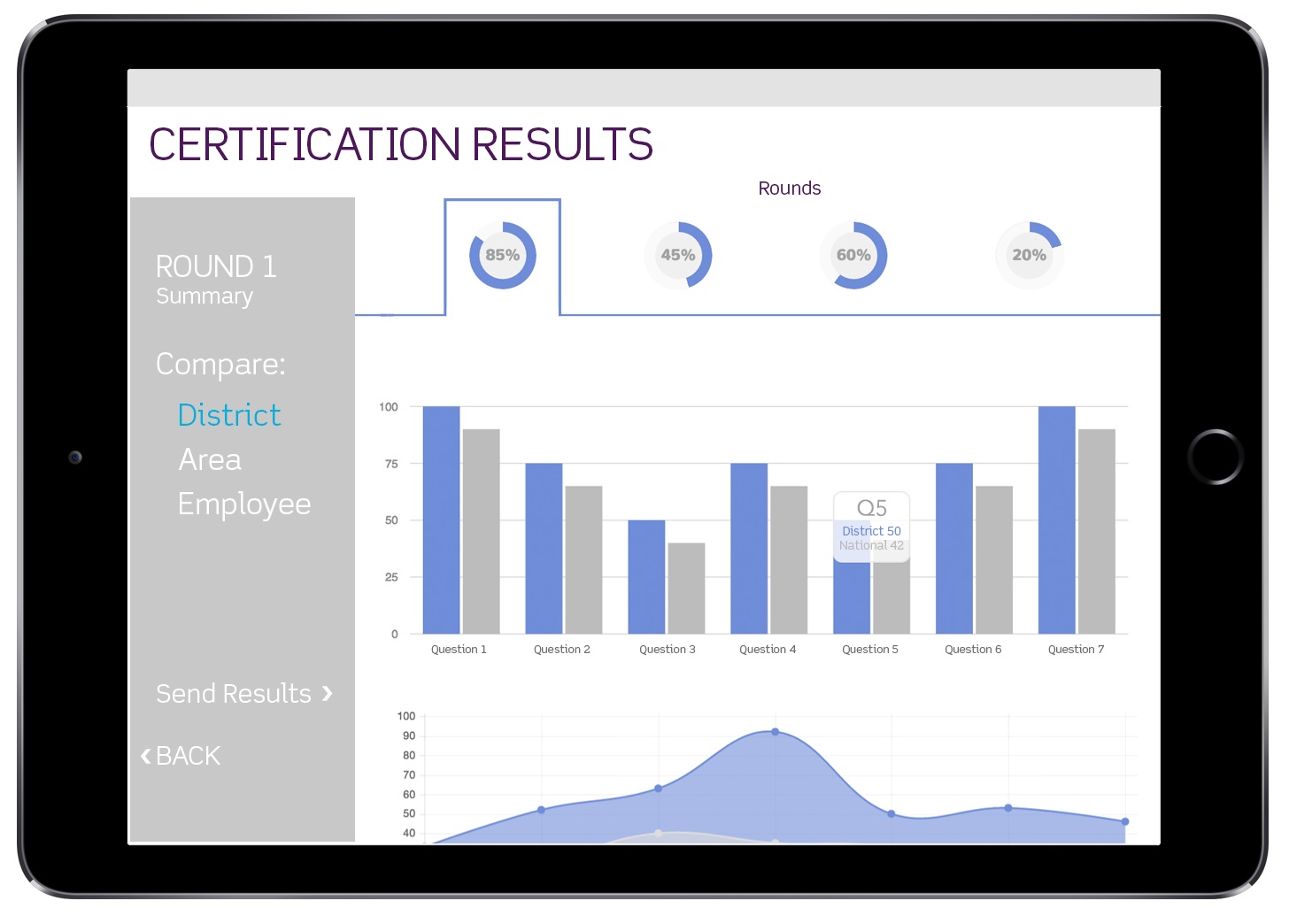
The new indication for your product is launched! You have been living in a hotel for days, teaching and motivating your sales force. All but a handful passed their certification this morning, cheered through the closing session, and are now headed to the airport with a boxed lunch in hand. But did you get the most value out of your certification session? After months of planning, writing, revising and starting from scratch, it is easy to discard what is arguably the most important measure of your training.
Data analysis is on the rise these days. What are the actionable analytics you can generate from your test results? How can you find areas of opportunity by analyzing test results? You will not be surprised to learn that planning is the key. There are three key areas for you to consider:
- An evaluation form, which provides better insight into the important parts of your message.
- Immediate insights you can deliver to learners after certification and before the conclusion of training.
- Longer-term learning areas or opportunities to reinforce excellent behaviors.
Good analytics start well before your event as you shape your evaluation form. When developing your certification session, consider what data you would like to have at the end of the process. More data leads to a more colorful picture, but you have to balance that against the limited time evaluators have to complete a form and deliver feedback. Simple binary yes/no checkboxes are efficient, but do not provide a deeper understanding of how well learners performed. Using a 0-5 scale will give you better insight. For example, a simple assessment of “met” or “did not meet” could give you a straightforward “95 percent passed,” leaving you with the confidence that an item has been learned well. However, if you evaluated the same criteria on a scale with a passing score of 2, you could see that even though 95 percent of the learners passed, their average score was only 2.3. That is a much different result, and gives you the opportunity to provide more training on that criteria.
While you are planning your form, also consider how results will be collected. Forms completed by hand require manual data entry, which could easily take days if you have a large number of forms. Using a form that can be scanned will still consume hours of work just to collect the data, and often can not be tied back to specific learners. An app-based evaluation form on devices connected to the Internet will deliver results in real time as forms are completed. (Your team will thank you, too, when it is easy to import results into your learning management system!)
If you are lucky enough to gather results live, there are some great opportunities to get actionable results as certification occurs. Immediately obvious is the ability to spot learners who are going to need extra coaching. A well-designed dashboard will give you visibility to low-scoring participants, giving you the option to pull them aside for extra coaching right away. What else can you discover during the testing? Occasionally, there are evaluators who may be scoring learners outside of the standard deviation. With a digital certification, extra-high or low scores from one evaluator are easily spotted, giving you the chance to recalibrate expectations with that facilitator.
Instant analysis can also provide more powerful talking points in a closing session call to action. Where did the sales team excel? Where can they improve? Tell them in the moment so they can synthesize the information on the trip home, before they start calling on customers. If managers have a way to talk with their direct reports after certification, they can also point out not only how their team did, but how they did in comparison to the larger group. Delivering instant feedback that is this specific demonstrates how important every aspect of the new message is, not to mention your organization’s commitment to providing excellent training.
With a digital certification process, after everyone is back home, post-event communication can be customized for greater impact. Specific coaching can be geared not to the sales force as a whole, but on smaller geographies, even down to the individual. Managers can compare their geography against the nation, or any other subset they choose. In what area can Boston improve that might let them see the results Peoria is getting? Is there an opportunity for a sales leader or brand member to hold a call for a district that needs help in a specific area? And perhaps most importantly, with the right data, a manager can create a very specific, tactical action plan to bring her representative to the next level.
When it is all done, do not neglect analyzing your own process. Perhaps the biggest value is knowing what can be improved for the next certification. What did you wish you had learned this time, and how can you incorporate that next time?
Certification can bring a lot more value than just being another part of your due diligence. The return on investment you see in your certification can be greatly improved with a little planning. Knowing what you want to learn both in the moment and after your training will help you plan an evaluation form that gives you and your sales team informative, actionable feedback. At your next training event, give your team results they can use to improve right away.
Clay Francis is the vice president of digital user experience at BlueprintNYC. You can contact him at clay@blueprintnyc.com or on Twitter @TheClayFrancis.








